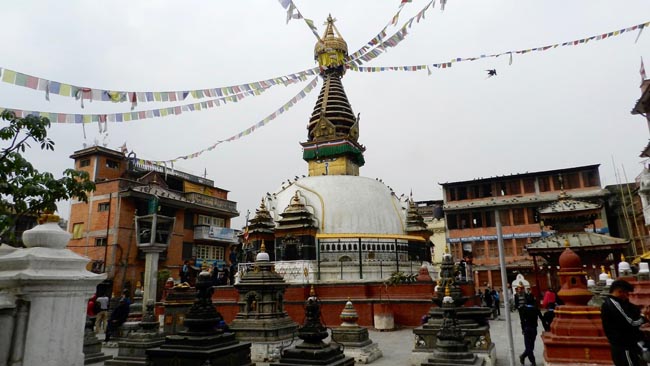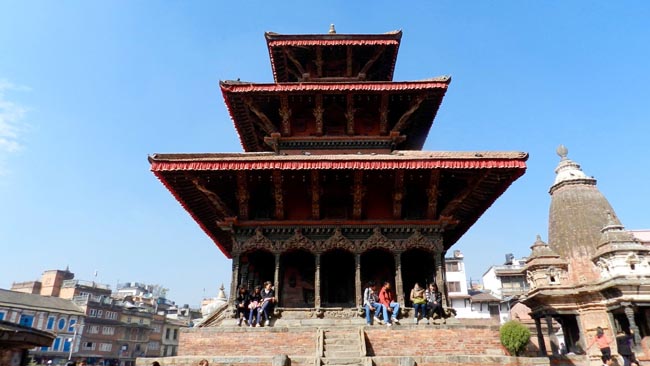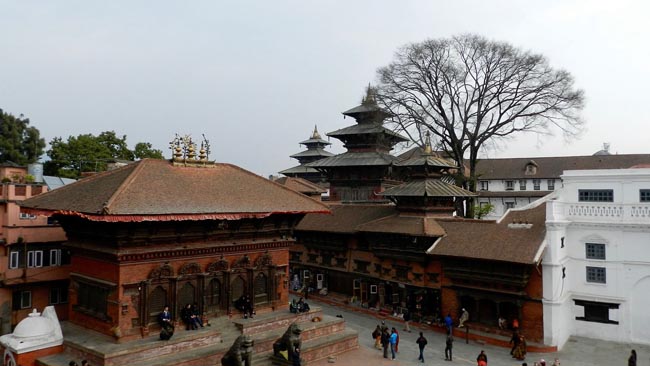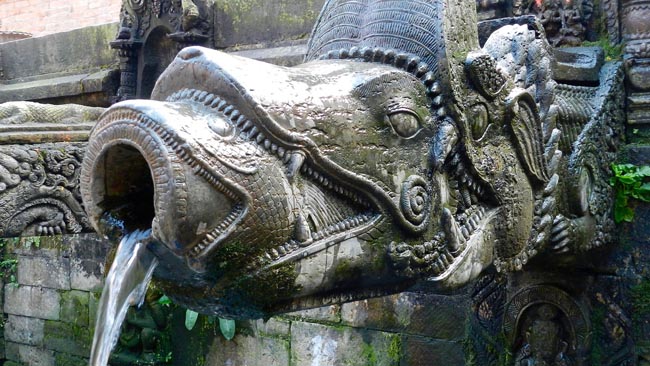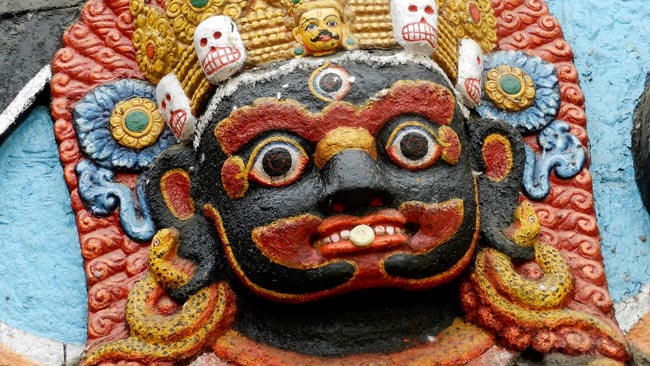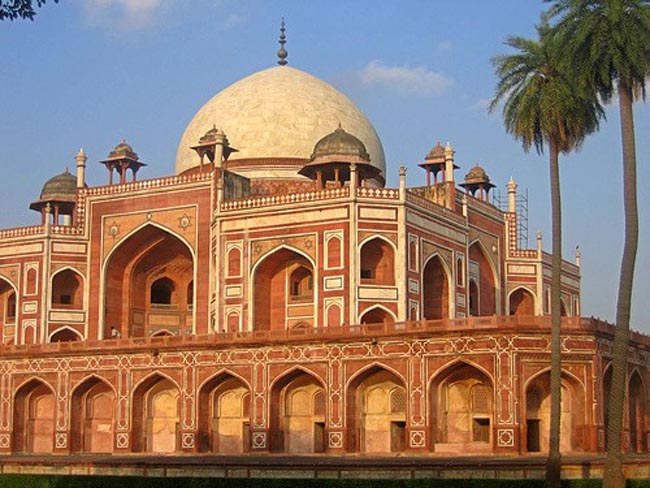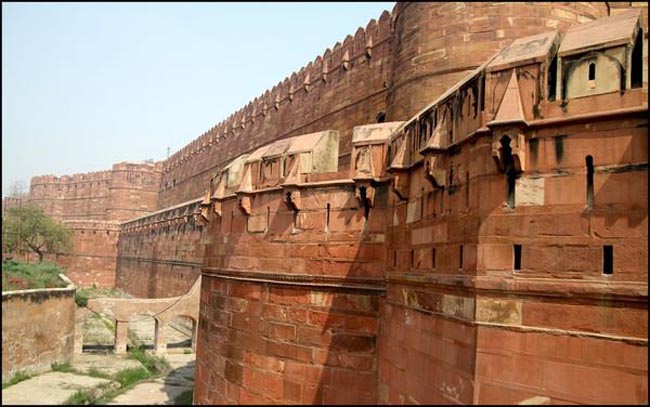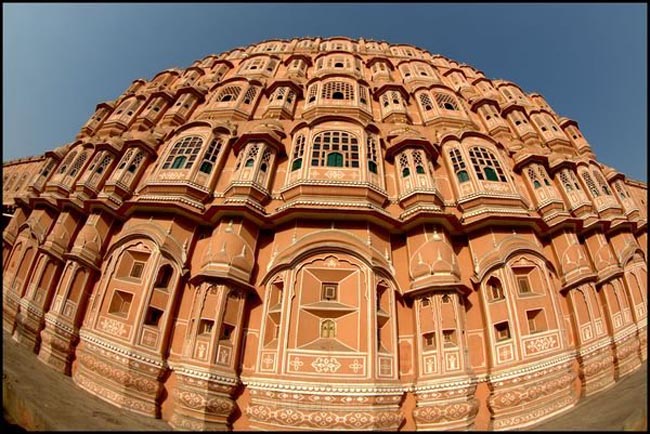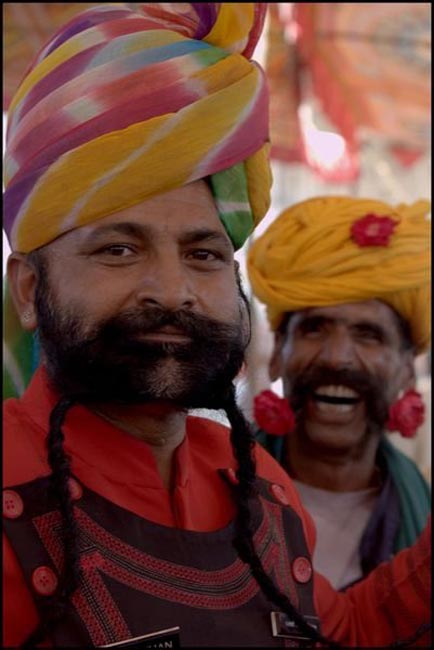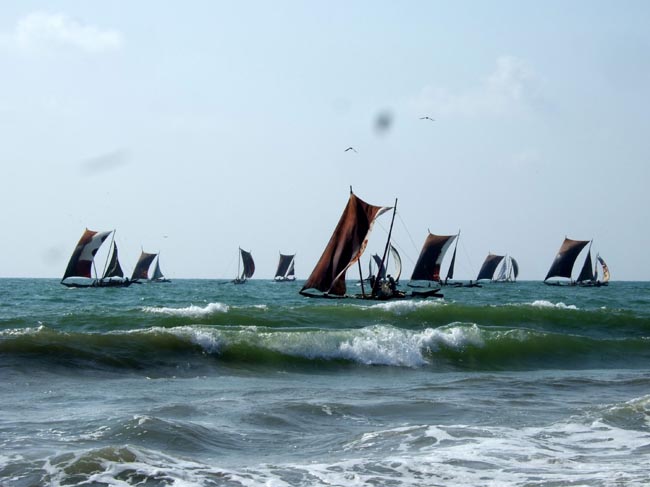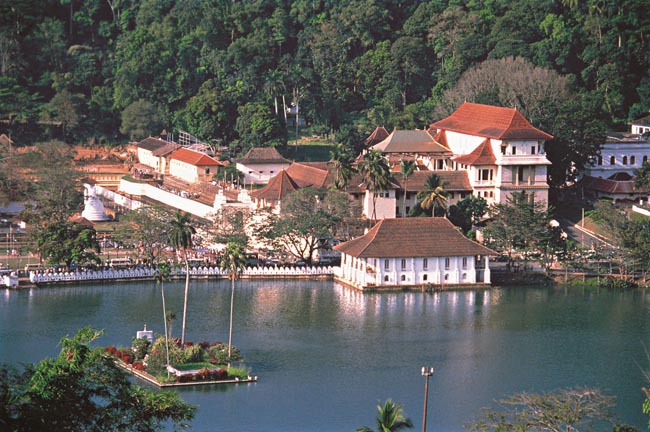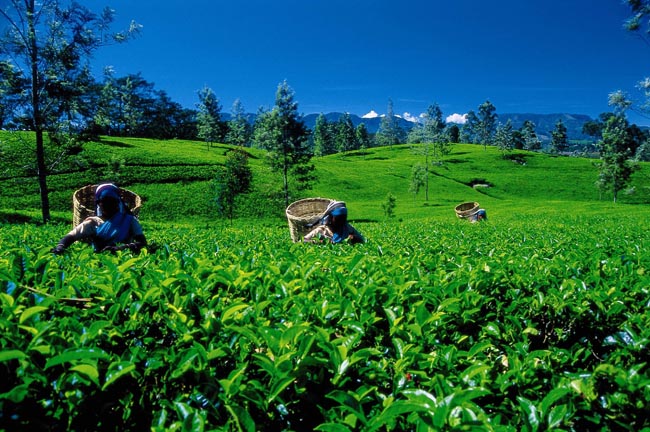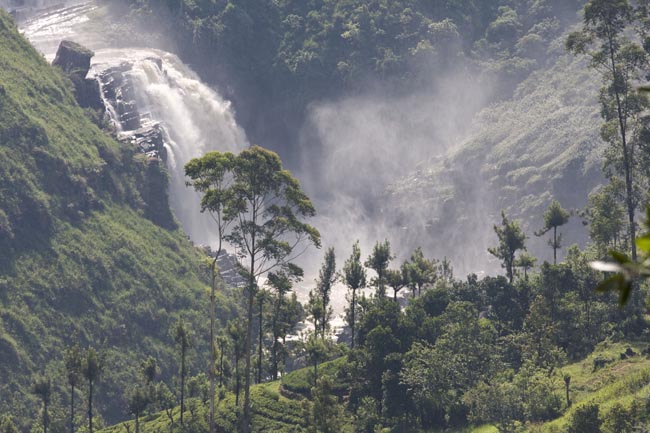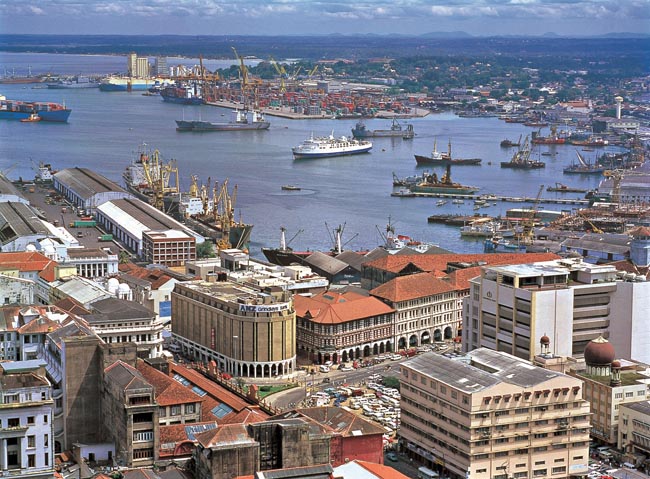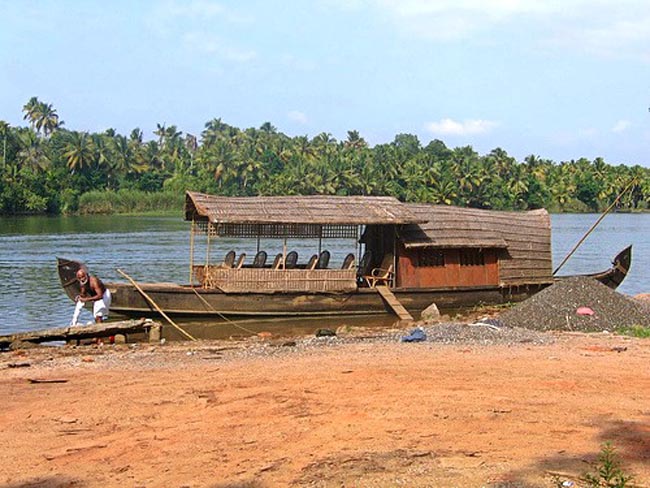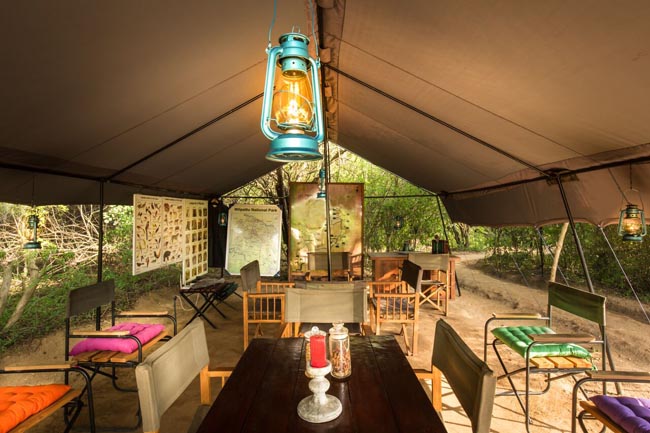Prices below are per person, twin-sharing costs in US Dollars (USD). Pricing does not include airfare to/from the tour and any applicable taxes. For single supplement rates and taxes (if any), please refer to below Prices & Dates table. For general information on flights to/from the tour, click here.
Your Travel and Accommodation Arranged For You
Tips Included for Driver, Restaurant Staff, Local Guides
Authentic Local Experiences With Lots Of Inclusions.
Select a date below to reserve your spot:
The above prices are subject to an additional $120 for taxes/fees levied on flights that occur as part of the tour. The internal airfares ARE included (any exceptions are listed in red below), but we list the taxes separately on your invoice as they are beyond our control and can change at any time.
Optional Single Supplement: $450 USD (number of singles limited).
Download Itinerary
Day 1 Arrival in Kathmandu
Welcome to Nepal, a country with spectacular geography and a rich cultural diversity. Within its narrow borders we will find a complete climatic range, from tropical to temperate, alpine to Arctic. As many as 30 different languages and dialects are spoken among the many ethnic groups if Indo-Aryan and Tibetan origins.
Overnight in Kathmandu.
Included Meal(s): Dinner
Day 2 Kathmandu: City Tour
This morning we travel to Kathmandu's central meeting area, Durbar Square, a profusion of temples reflecting the different architectural styles dating from the eleventh century. The area also includes the Royal Palace with its gilded gates and elaborate statues. The square is alive with a multitude of nationalities, intermingled with stalls displaying a wide variety of Nepalese and Tibetan handicrafts. We will also see "Freak Street" -- a famous hippie meeting place from the 60's.
We then proceed to Swayambhunath Temple, Nepal's most significant centre of Buddhist worship. There has been a temple on this site since at least the 5th century. Swayambhunath is also known as the "Monkey Temple" due to the large population of monkeys that make the grounds their home. The temple buildings are set atop a hill and offer an excellent view of Kathmandu and its valley.
Our next stop is Pashupatinath Hindu Temple, a very interesting place located on the sacred Bagmati River where there may be cremations taking place on the ghats. We also visit Boudhanath Stupa, one of the holiest Tibetan Buddhist sites in Kathmandu and one of the largest spherical stupas in Nepal.
Overnight in Kathmandu.
Included Meal(s): Breakfast and Dinner
Not finding what you're looking for?
Our specialists can take away the stress and create a private custom tour tailored to your exact interests and budget.
Day 3 Bhaktapur - Chitwan
Today we travel by road to the world-famous Chitwan National Park. When one thinks of Nepal it is usually of soaring, snow-capped Himalayan peaks. However, Nepal is situated along the southern slopes of those mountains and encompasses land from over 8,000 metres (over 26,240 ft) down to less than 100 metres (328 ft) above sea level. In fact, only a very small proportion of Nepal's population lives in the mountains and over 50% of the people live in the lowland Terai region bordering India. This lush band of countryside runs from the western border right across Nepal to the eastern border and is only about 50 km (30 miles) wide. Its fertile soil and warm climate make it the most productive agricultural region in the country, and consequently most of the preserved natural vegetation is in the Chitwan National Park.
The park was created in 1973, principally as a sanctuary for the Asian one-horned rhino and the majestic Bengal tiger. The park is set around the confluence of three rivers -- the Narayani, the Rapti and the Reu; the vegetation mainly forest and tall grass.
Overnight in the vicinity of Chitwan National Park.
Included Meal(s): Breakfast and Dinner
Day 4 Chitwan National Park
With our naturalist guide we explore the area and learn about the inhabitants of this complex ecosystem. Bird watching is excellent in this area. One of the highlights of our Chitwan explorations is a wildlife viewing expedition while riding on the back of an elephant. Moving effortlessly through the tall grasses and underbrush, the elephants provide the best vantage point from which to see Chitwan's abundance of birds and animals. We may even be lucky enough to see a rhino or a tiger.
Overnight in the vicinity of Chitwan National Park.
Included Meal(s): Breakfast, Lunch and Dinner
Day 5 Chitwan - Pokhara
We drive through winding gorges and across fast flowing rivers from Chitwan to Pokhara, located on the shore of a crystal blue lake with the peaks of the Himalaya filling the skyline, including Machhapuchhare, a peak that has never been climbed.
Pokhara is an extraordinary landscape and one of the most attractive destinations in Nepal. The treasures of Pokhara include the tranquillity of Phewa Lake, spectacular views of Annapurna range, luscious green hills, terraced farm slopes, countless species of vegetation, rushing rivers in a tropical-like environment. Pokhara is, since ancient times, the traditional export center for trade with India and Tibet. Merchants from remote Himalayan regions of Nepal, such as Muktinath and Mustang, still come here with mule trains.
Overnight in Pokhara.
Included Meal(s): Breakfast and Dinner
Day 6 Pokhara Valley
Today we admire the landscape and enjoy a tour of the area's highlights. Bindhyabasini Mandir is a local Hindu temple, dedicated to Goddess Bhagwati, on the northeast of Phewa Lake in the vicinity of the Old Bazaar, still the commercial hub of merchants from the remote Himalaya. We also visit a Tibetan village where we will encounter Tibetan Buddhism, culture and crafts. After the Chinese invasion of Tibet in the 1950's over 30,000 Tibetan refugees settled throughout Nepal.
Overnight in Pokhara.
Included Meal(s): Breakfast and Dinner
Day 7 Pokhara - Kathmandu
Today we travel back to Kathmandu. Time-permitting you may have some time for independent exploration and last-minute shopping.
Overnight in Kathmandu.
Included Meal(s): Breakfast and Dinner
Day 8 Kathmandu, Nepal - Delhi, India
Today we fly from Kathmandu to Delhi and transfer to our hotel.
The name Delhi, Dehali or Dilli is derived form Dhillika, the name of the first medieval township of Delhi, located on the southwestern border of the present Union Territory of Delhi, in Mehrauli. This was the first in the series of seven medieval cities, also known as Yoginipura, the fortress of the yoginis (female divinities).
Overnight in Delhi.
Included Meal(s): Breakfast and Dinner
Day 9 Delhi: City Tour
Today we have a full-day tour of Delhi. We start with a drive north into Old Delhi, passing along the Rajpath (King's Way) and stopping for photos at the India Gate. The 42m high India Gate, an "Arc de Triomphe"-like archway in the middle of a crossroad, commemorates the Indian soldiers who lost their lives fighting for the British Army during WWI. This landmark also bears the names of British and Indian soldiers killed in the Northwestern frontier in the Afghan War of 1919.
Next we will make a visit to the Jamma Mosque. Located in the heart of Old Delhi, the largest mosque in India can accommodate as many as twenty-thousand worshippers. This imposing architectural monument, with it's three gateways and two minarets, took fourteen years to complete (1644-58). We will also enjoy a cycle-rickshaw ride down Chandni Chowk once the imperial avenue down which Shah Jehan rode at the head of lavish cavalcades.
We will re-board our bus, going past the Red Fort (photo stop), and we disembark at the Raj Ghat, set within a beautiful park. This national monument is where the father of the nation, Mahatma Gandhi, was cremated.
After a stop for lunch we continue our sightseeing with a visit to Humayan's Tomb, an excellent example of Mughal architecture, pre-dating the Taj Mahal by almost 100 years. Persian in style, this is a beautiful red sandstone building inlaid with black and white marble.
We will finish our day with a visit to the Qutub Minar. Few other monuments are as closely identified with Delhi as the Qutub Minar, this first monument of Muslim rule in India. It heralded the beginning of a new style of art and architecture which came to be know as the Indo-Islamic.
Overnight in Delhi.
Included Meal(s): Breakfast and Dinner
Day 10 Delhi - Agra: The Taj Mahal & Agra Fort
Today we travel by road for Agra. On arrival we tour the city and visit its main attraction: The Taj Mahal, one of the world's most beautiful buildings. Called "A dream in marble," the Taj Mahal was built by Shah Jehan as a memorial to his queen Mumtaz Mahal. Shah Jehan built the Taj to enshrine the body of his favourite wife, Mumtaz Mahal (elect of the palace), who died shortly after giving birth to their 14th child in 1631. Construction by a work force of 20,000 men from all over Asia commenced in 1632 and the tomb was completed in 1653. Marble was brought from Makrana, near Jodhpur, and precious stones of onyx, amethyst, malachite, lapis lazuli, turquoise, jade, crystal and mother of pearl were carried to Agra from Persia, Russia, Afghanistan, Tibet, China and the Indian Ocean.
The Taj is remarkable for its perfect proportions and rich pietra dura, with minute details executed with great skill. The building marks the most developed stage of Mughal architecture. The designer of this grand sepulchre is believed to be Ustad Ahmad Lahori, a master architect of the age. The calligraphic ornamentation on the Taj was authored by Amanat Khan Shirazi, a great writer of the 17th century.
The balance of our day will be spent visiting some of Agra's other remarkable monuments such as the Agra Fort, as rugged as the Taj Mahal is ethereal where we will have a chance to view the perfectly-proportioned Moti Masjid (Pearl Mosque) and have a visit to the Itimad-ud-daulah Mausoleum on the other side of the Yamuna River.
Overnight in Agra.
Included Meal(s): Breakfast and Dinner
Day 11 Agra - Fatehpur Sikri - Jaipur
Before leaving Agra we will visit Fatehpur Sikri, an ancient capital of the Moghul Empire built by Emperor Akbar the Great between 1569 and 1585. It was later abandoned due to the lack of a dependable water supply, but remains one of the most perfectly preserved examples of a Moghul city. Now deserted, it is almost perfectly preserved, a masterpiece in sandstone glowing in subtly changing shades of pink and red as the day progresses and the light fades. The very embodiment of Akbar's unorthodox court, the city fuses Hindu and Muslim artistic traditions.
Jaipur has been dubbed the "Pink City" because of the many buildings inside the old city walls that are painted pink. Scattered throughout the northeast section of the town are palaces and temples designed in a variety of styles; the city lies snugly on a bed of a long-dry lake.
Overnight in Jaipur.
Included Meal(s): Breakfast and Dinner
Day 12 Jaipur - Amber - Delhi
Today our tour takes us to Amber, once the ancient state capital but now deserted. Located on the crest of a rocky hill behind Maota Lake, 11 km (7 miles) north of Jaipur, the Rajput stronghold was the capital of the Kuchhawa Rajputs from 1037 until 1728. Rising on the slopes of a steep hill is the Amber fortress with its imposing facade. The interior presents a galaxy of art including the world's best Chamber of Mirrors.
In the afternoon we tour Jaipur, one of the best-planned cities in India, built of rose-pink sandstone by the great astronomer-king Jai Singh II in 1727. We visit the City Palace, part of which is still the Maharaja's residence. The complex has been developed into a museum containing rare manuscripts, fine specimens of Rajput and Mughal paintings, royal apparel, and an armoury. Hawa Mahal (Palace of Winds) is the landmark of Jaipur, a curious building, elaborate and fanciful, built of pink sandstone with a delicate honeycomb design. Rising five storeys high, it is composed of semi-octagonal overhanging windows, each with its perforated screen, which allowed the ladies of the court to look onto the main street without being seen.
Later this afternoon we return to Delhi.
Overnight in Delhi.
Included Meal(s): Breakfast and Dinner
Day 13 Delhi, India - Colombo, Sri Lanka - Negombo
Today we fly to Colombo and transfer to our hotel in Negombo, a seaside town just north of Colombo, the commercial capital of Sri Lanka with a population of 1.1 million inhabitants.
Overnight in Negombo.
Included Meal(s): Breakfast and Dinner
Day 14 Colombo Area - Muthurajawela Nature Reserve - Anuradhapura
This morning we make the 180 km (110 mile) drive to Anuradhapura, the first capital of Sri Lanka.
En route we take a boat ride through the Muthurajawela Nature Reserve. This protected area of wetland is thriving with bird life, with 126 resident species and 40 species which migrate here. The boat ride provides a view of Sri Lankan wetlands as never seen before. Imagine listening to the chorus of feathered creatures, watching the water lilies dancing on the tropical sun, monkeys swinging on treetops and crocodiles moving stealthily in water.
We continue to Anuradhapura, arriving in the afternoon.
Overnight near Anuradhapura.
Included Meal(s): Breakfast and Dinner
Day 15 Anuradhapura - Dambulla
This morning we visit a selection of the most remarkable sights of Anuradhapura. As per written records Anuradhapura was made royal capital by the king Panduk Anhaya in 380 BC. It remained residence and royal capital for 119 successive Singhalese kings till the year AD 1000 when it was abandoned and the capital moved to Polonnaruwa. You will see some of the most famous as well as the tallest dagoba of Sri Lanka, remains from palaces, temples, monasteries, ceremonial baths and the temple of the holy Bo-tree. This tree was grown from a sapling of the very tree under which more than 2500 years ago the Buddha found enlightenment.
We continue to Dambulla and have a tour of its major attractions, which are spread over 5 caves containing statues and paintings. Since it's founding in the first century BC by King Valagamba, many improvements and additions have been carried out to the collection. Hindu statues are believed to be of the 12 century AD and the latest paintings are of the late 18-century. Dambulla is a unique and important historical site because of the amalgamation of material from many eras.
Overnight in Dambulla.
Included Meal(s): Breakfast and Dinner
Day 16 Dambulla - Sigiriya - Polonnaruwa - Dambulla
Taking advantage of cooler morning temperatures, we will have a tour of Sigiriya. The complex lies on the steep slopes and at the summit of a granite peak standing some 370 m (1,220 feet) high. This is the earliest surviving royal palace in Sri Lanka, with several chambers and meticulously planned water gardens, the earliest such gardens found in Asia. The Mirror Wall, which had been exposed to elements for over fifteen centuries, still carry some of the original sheen that has given it the name. This archaeological site, unparalleled in South Asia, has been declared a World Heritage Site.
We then drive to Polonnaruwa for a visit of the well-preserved remains of capital of the Singhalese kings from the 11th to the 13th century. We see the excavations: Temples, dagobas, the royal palace, the royal library. The most famous Singhalese king, Parakrama Bahu the Great (1153-1186), built in the environs of Polonnaruwa, an impressive irrigation system with many artificial tanks interconnected with irrigation channels.
Overnight in Dambulla.
Included Meal(s): Breakfast and Dinner
Day 17 Dambulla - Kandy
This morning we have a tour of a local spice garden. A local guide will most likely show us custard apples, jackfruit, cocoa, cardamom, pineapples, lemon grass, wild asparagus, nutmeg, curry leaves, cinnamon, ginger, vanilla plant, coco, aloe vera, etc. We continue our travel through the interior of the island, past paddy fields, palm groves and coconut plantations.
Our journey continues via a road that begins to ascend gradually. After 92 km / 58 miles (90 minutes), we arrive at the old royal city of Kandy, situated at 500 m (1,640 feet) above sea level and beautifully nestled between green hills. In its very centre lies a small artificial lake and palace of the last Singhalese king which has become a temple and the holiest shrine in Sri Lanka and where the tooth relic of the Lord Buddha is highly venerated.
On arrival we will drive around the lake and visit the National Museum. This evening we shall pay a visit to the Temple of the Holy Tooth followed by an opportunity to attend a dance performance (subject to availability) where we will see the famous Kandyan dance as well as up-country and devil dances.
Overnight in Kandy.
Included Meal(s): Breakfast and Dinner
Day 18 Kandy: Botanical Garden - Nuwara Eliya
After breakfast we will visit the world-famous Botanical Garden at Peradeniya. The park dates back to 1371 under the reign of King Vikrama Bahu III when he held court here. The English put the cornerstone of the present garden in 1821. During the Second World War the garden served as the headquarters of Earl Mountbatten, the supreme commander of the allied forces in Southeast Asia who later became the last Viceroy of India. In the garden we find an immense variety of orchids, spice trees, palms, bushes, as well as tropical plants and flowers of all types.
We then travel 77 km (48 miles) to Nuwara Eliya. The road ascends steadily and shortly before reaching Nuwara Eliya, we will have climbed 1500 m (4,920 feet). You are now in the tea-country; wherever you look, you will see tea plantations, the rich full green of thousands and thousands of tea bushes. Occasionally you can see a few rice fields and near villages, vegetable plantations or gardens. En route we visit a tea factory and plantation.
We tour the resort town of Nuwara Eliya, situated at 2070 m (6,790 feet) above sea level, lies on a little lake and is surrounded by mountains covered over and over by tea bushes. The town itself was the favourite hill station of the British who set it up to look like a misplaced British village. The charming, old, pink-brick post office, the English country house-like Hill Club with its hunting pictures, mounted hunting trophies and fish, the 18-hole golf course (said to be one of the finest in Asia), and even the well-stocked trout streams speak of the area's English past.
Overnight in Nuwara Eliya.
Included Meal(s): Breakfast and Dinner
Day 19 Nuwara Eliya - Colombo
We have an early start for our drive back to Colombo to allow us time to have a panoramic tour of the city.
Colombo was probably known to Roman, Arab, and Chinese traders more than 2,000 years ago. Muslims settled there in the 8th century and controlled much of the trade between Sinhalese kingdoms and the outside world. The Portuguese arrived in the 16th century and built a fort to protect their spice trade. The Dutch captured the city in the 17th century. The British made the city the capital of their crown colony of Ceylon in 1802. The University of Sri Lanka, several colleges, an observatory, a national museum, and numerous churches, mosques, and Buddhist and Hindu temples are all located in and around Colombo; on the outskirts are two major Buddhist universities.
Overnight in Colombo.
Included Meal(s): Breakfast and Dinner
Day 20 Departure
Departure from Colombo.
BON VOYAGE!
Included Meal(s): Breakfast and Dinner
Inclusions
Breakfast and dinner are included daily. Evening meals on tour will be taken mostly at hotels and restaurants. In some locales we endeavour to break up the buffet dinners with a meal at a local restaurant but, overall, the imperatives of hygiene and quality dictate hotel meals. All transport, accommodation, sightseeing and entrance fees are included for sites noted as 'visited' in the detailed itinerary. Gratuities for drivers, restaurant staff, porters, local guides. Airport transfers for land & air customers arriving / departing on tour dates.
Exclusions
International airfare to/from the tour. Tour Leader gratuities, lunches, drinks, personal items (phone, laundry, etc), domestic and international (if applicable) air taxes, visa fees, and any excursions referenced as 'optional'. Airport transfers for Land Only customers. Optional trip cancellation insurance. Our post-reservation trip notes offer further guidance on shopping, not included meals, visas, locally paid departure taxes.
Seasonality and Weather
NEPAL: The Kathmandu Valley, at an altitude of 1310m (4,297 ft), has a mild climate, ranging from 14-22C (58-71F) in spring, and 5-20C (40-68F) in late fall. Nepal's weather is generally predictable and pleasant. There are 4 climatic seasons: Mar-May (spring), Jun-Aug (summer), Sep-Nov (autumn) and Dec-Feb (winter). The monsoon is approximately from the end of Jun-mid Sep. About 80% of the rain falls during that period, so the remainder of the year is dry. INDIA: For most of the country, November-March is (by far) the best time to visit. During those months, temperatures range from 40-70 F / 5-20 C in the north. While conditions can vary widely, you must be prepared for some heat. SRI LANKA: Upland areas are cooler and more temperate and coastal areas are cooled by sea breezes. There are 2 monsoons, which occur May-Jul & Dec/Jan. The best time to travel weather wise is between October and March.
Transport and Travel Conditions
Ground transport via private air-conditioned motor coach. Internal flights via scheduled carriers. The tour is not physically strenuous though it is busy; you must be prepared for some early starts, be steady on your feet, and be able to endure some heat and long days. We have numerous walking tours and visit several sites that are LARGE with steps and uneven surfaces. Porters are available at hotels but you must be able to manage with your baggage at airports.
Am I suitable for this tour? Please refer to our self-assessment form.
Activity Level: 1
No particular physical activity is involved other than town/city walks and short walks to dinners and sites of interest, some of which are large.
To learn more about the Activity levels, please visit our tour styles page.
Accommodation
Accommodation in air-conditioned 3-4 star hotels. Hotel properties are mostly modern and Western style. Some are older, character properties with simpler rooms and perhaps no elevators. Our accommodation in Delhi cannot be considered "central" in a conventional sense. These are huge sprawling cities with many districts and centres of interest / business; our hotels are well-located for what we want to accomplish on our city coach tour. Some properties have swimming pools. Laundry services at most hotels for a modest cost. Single rooms are limited and possibly smaller than twins. Porters are generally available (see 'Inclusions').
Staff and Support
Tour Leader throughout, local drivers, local guides at various locations.
Group Size
10-18 (plus Tour Leader)
Regions visited: South Asia
Countries visited: Nepal; India and Sri Lanka
*The red tour trail on the map does not represent the actual travel path.
The following is a list of sample hotels at some locations included on this tour. The hotels shown here are meant to provide a general sense of the standard of hotel we usually aim for; they are not necessarily confirmed for your chosen departure.









The hotel enjoys proximity to local business complexes and MNCs of Okhla Phase I, II, III, Mohan Corporative Industrial State, Nehru Place, Jasola, Noida, Film City, Expressway, DND Flyway, NSIC Grounds Okhla, Pragati Maidan and India Expo Centre & super specialty hospitals such as Indraprastha Apollo Hospital and Fortis Escorts Heart Institute. During the leisure time, visit tourist places like Red Fort, Qutab Minar, Lotus Temple, Tughlakabad Fort, Akshardham Temple, Humayun Tomb and Okhla Bird Sanctuary in the nearby areas.





Located 2 km. from the Taj Mahal, in the heart of ... and yet free from its din and bustle, The Clarks Shiraz is just 7 km. from the Airport and 3 km. from the Railway Station.
Overlooking the Taj and Agra Fort, Hotel Clarks Shiraz has been synonymous with exceptional hospitality for the last five decades. The hotel has the honour of serving a number of distinguished guests.



The hotel, blending traditional Indian hospitality & Indian modernism, has an impressive exterior and interiors with architecture typical of Jaipur. Your stay at this Jaipur hotel is sure to leave a lasting spell on your mind.




















